Diving into the blender debate, we’re here to slice through the noise.
Plastic versus glass blenders, an epic showdown! Glass champions durability and class; plastic counters with lightweight ease.
We’ve all been there—whipping up a smoothie, only to ponder the material of our blender jug. Why does it even matter?
Well, we learned the hard way after a berry stain nightmare and the great turmeric incident.
Glass laughs in the face of stains; plastic? Not so much.
Yet, hefting a glass jug pre-coffee? A workout we didn’t sign up for.
Stick with us as we blend through facts and personal mishaps to crown a kitchen champion.
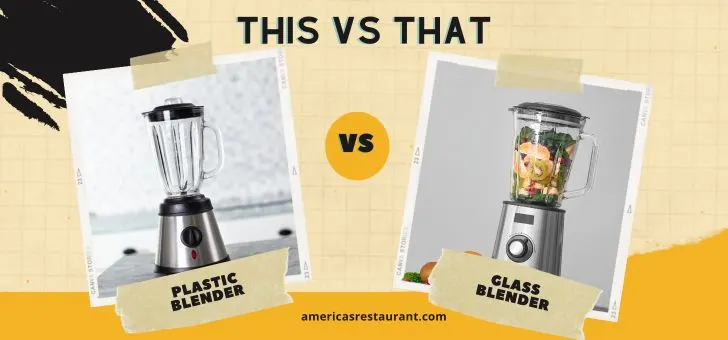
What is a Plastic Blender?
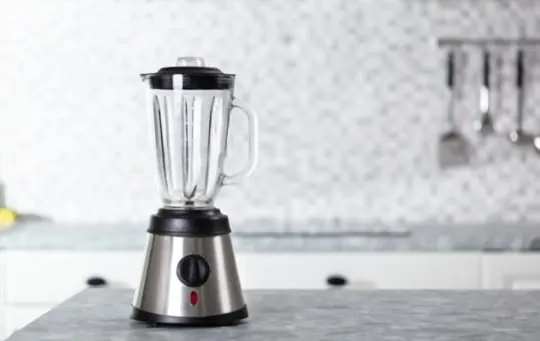
Plastic blenders are a type of kitchen appliance used to blend and puree ingredients.
They feature a blending jar made of BPA-free plastic material, which is shatter-resistant.
These blenders are lightweight, easy to handle, and budget-friendly compared to glass blenders.
With use over time, plastic blender jars may become discolored or crack, but their durability makes them an excellent choice for everyday use.
What is a Glass Blender?
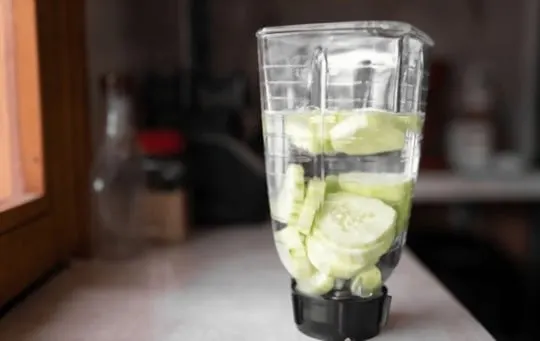
Blenders made with glass jars are known as glass blenders.
Glass blenders are an alternative to plastic blenders.
The integration of a glass jar in a blender provides many advantages, including longer-lasting and more robust quality, easier cleaning, and no discoloration or odor retention over time.
With their sleek appearance, they are usually preferred by people who are looking for a stylish solution for blending their ingredients.
Differences Between Plastic and Glass Blenders
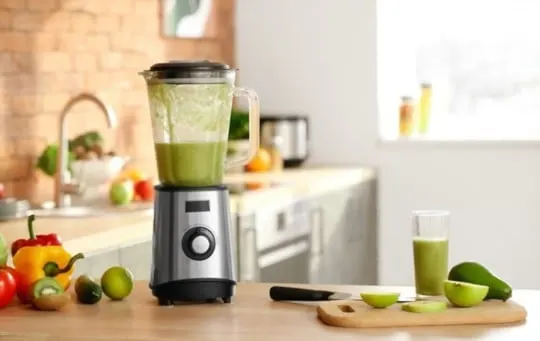
Blenders are a staple in every kitchen, but choosing between plastic and glass can be daunting.
Plastic blenders are lightweight and cheaper but can be prone to scratches and discoloration.
Glass blenders, on the other hand, are durable, easy to clean, but heavy.
Durability and Longevity
When it comes to the durability and longevity of a blender, there are various factors to consider.
One important aspect is the material of the blender, which can greatly impact its lifespan.
While both plastic and glass blenders have their advantages, a glass blender might have higher durability and longevity due to its sturdier material.
Glass is less susceptible to scratches and cracks compared to plastic, which can easily crack or break down over time with frequent use.
Moreover, many plastic blenders tend to discolor and become cloudy over time due to exposure to high temperatures and acidic ingredients.
This is not an issue with glass blenders since they have non-porous surfaces that do not absorb stains or odors.
In essence, while both types of blenders can last for years when well-maintained, investing in a glass blender could mean better long-term value for money.
It’s important to note that proper care and maintenance also play a significant role in ensuring the longevity of any blender type.
No matter the material, regularly cleaning your blender after each use and avoiding overfilling it can help avoid wear and tear on its parts.
Impact on Taste and Odor
Blending food in plastic and glass blenders can impact the taste and smell of the recipe.
Plastic blends emit a chemical odor that affects the taste of the food, mainly when blending hot liquids.
On the contrary, glass blenders do not have any impact on the taste or odor of the blend, enabling high assurance of equivalent results every time.
Hence, using a glass blender can be an excellent option for cooking enthusiasts who value their culinary experience’s authenticity and quality.
The difference lies in how molecules interact with different materials.
Organic molecules in food react negatively with chemicals present in plastic, resulting in a change in flavor or smell.
This is especially pronounced when working with warm liquid recipes because heat increases molecular activity, which could intensify unwanted reactions between organic molecules and synthetic chemicals present in plastics.
Glass does not have these challenges due to its smooth surface and neutral texture properties; thus, it ensures that blending does not affect your recipe’s flavor.
Choosing between plastic and glass blenders depends on individual preferences as both have their unique advantages.
However, given that flavored food is important to many people, it’s advisable to use glass blenders since they guarantee uniformity in odor and don’t alter your recipe’s taste.
Safety Considerations
The safety aspect is crucial when considering which type of blender to choose.
It’s essential to assess potential dangers and analyze the possible risks associated with both plastic and glass blenders.
When it comes to plastic blenders, consumers need to ensure that they are made from high-quality, BPA-free plastic material that will not release harmful chemicals or toxins into the food when blending.
Moreover, a poorly constructed plastic blender can crack or break under high pressure, causing severe injury.
On the other hand, glass blenders are durable and safe but can still present specific hazards if not handled correctly.
Glass may shatter if dropped, causing potentially harmful cuts or burns.
However, high-quality tempered glass blenders are less prone to breakage and safer for household use.
Ultimately, regardless of the type of blender chosen, users should follow manufacturers’ safety guidelines carefully and avoid overloading the blender beyond the maximum capacity.
It’s also vital to keep all appliance components clean and free from debris that may interfere with functionality or cause overheating.
Ease of Cleaning and Maintenance
A vital factor in selecting a blender is its cleaning and maintenance process.
The ease with which you can clean and maintain your blender can make or break your user experience.
When it comes to cleaning and maintaining blenders, both plastic and glass have their unique advantages.
- Plastic blenders are less fragile, lightweight, and easy to handle. They also tend to be cheaper compared to glass blenders. Cleaning plastic blenders is straightforward; you can use soap and water without worrying about breaking the blender’s container. Additionally, plastic containers don’t stain quickly, ensuring that your blender stays looking new for longer.
- On the other hand, glass blenders are sturdier, elegant in appearance, and don’t absorb smells like plastic containers do. Glass containers are dishwasher safe and can withstand higher temperatures than plastic ones, providing better sterilization during cleaning. It’s worth noting that while glass may appear difficult to clean due to its fragility, most manufacturers make their blenders dishwasher safe. Thus saving you the trouble of complicated manual cleaning techniques.
As such, when it comes down to selecting a blender based on cleaning and maintenance criteria alone – both plastic and glass serve different purposes depending on user preferences.
Similarities Between Plastic and Glass Blenders
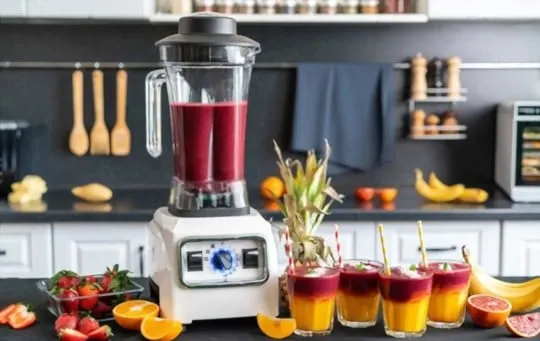
Both plastic and glass blenders are popular choices in the market.
They share similar features that make them suitable options for blending.
One of their commonalities is that they both have a removable blade assembly that can be washed easily.
Another similarity is that they both come with multiple speed settings, making it easier to blend different types of ingredients effectively.
In addition to their similar features, plastic and glass blenders share the ability to be used for various blending purposes.
They can be used to blend fruits, vegetables, ice, nuts and other solid ingredients efficiently.
However, one crucial difference between plastic and glass blenders is that plastic blenders are generally more affordable than glass ones.
Furthermore, plastic blenders are more durable, shatterproof and lightweight compared to glass blenders.
In summary, while there may be only a few differences between the two types of blenders in terms of functionality, knowing which material to choose matters concerning durability and price.
Ultimately, it all depends on your personal preference.
Factors to Consider When Choosing Between Plastic and Glass Blenders
When comparing blenders, there are multiple factors to consider before selecting between plastic and glass options.
- One of the main concerns is their durability. Glass blenders usually last longer than plastic ones due to being less susceptible to scratches and cracks. Additionally, glass blenders tend to be heavier and more stable, but they can also be prone to shattering if dropped.
- On the other hand, plastic blenders are lighter weight and often come with more features such as heat resistance and dishwasher-safe parts.
Another important aspect to weigh in on is potential health risks.
Some plastics may contain harmful chemicals, so it’s vital to ensure the material used in plastic blenders is BPA-free.
Glass blenders generally do not have this issue as they do not contain any harmful additives.
In addition, glass blenders are easier to clean compared to plastic or stainless steel since they do not absorb smells or stains.
It’s also crucial to consider the price point when choosing a blender.
While glass may offer superior durability and safety benefits, plastic alternatives tend to be more affordable for those working on budget constraints.
Ultimately, deciding between a Plastic vs Glass Blender comes down entirely upon your personal preferences and requirements as each type of blender has its own unique advantages and drawbacks that you need to keep in mind while making an informed decision.
Conclusion
After analyzing the various factors, it can be concluded that both plastic and glass blenders have their distinctive features.
While a plastic blender is lightweight and shatterproof, a glass blender is durable and resistant to scratches and stains.
Therefore, choosing between them depends on individual preferences and needs.
To make an informed decision before purchasing a blender, one must weigh the pros and cons of each type based on their use case scenario rather than opting for one solely based on popular opinion or random selection.

Leave a comment